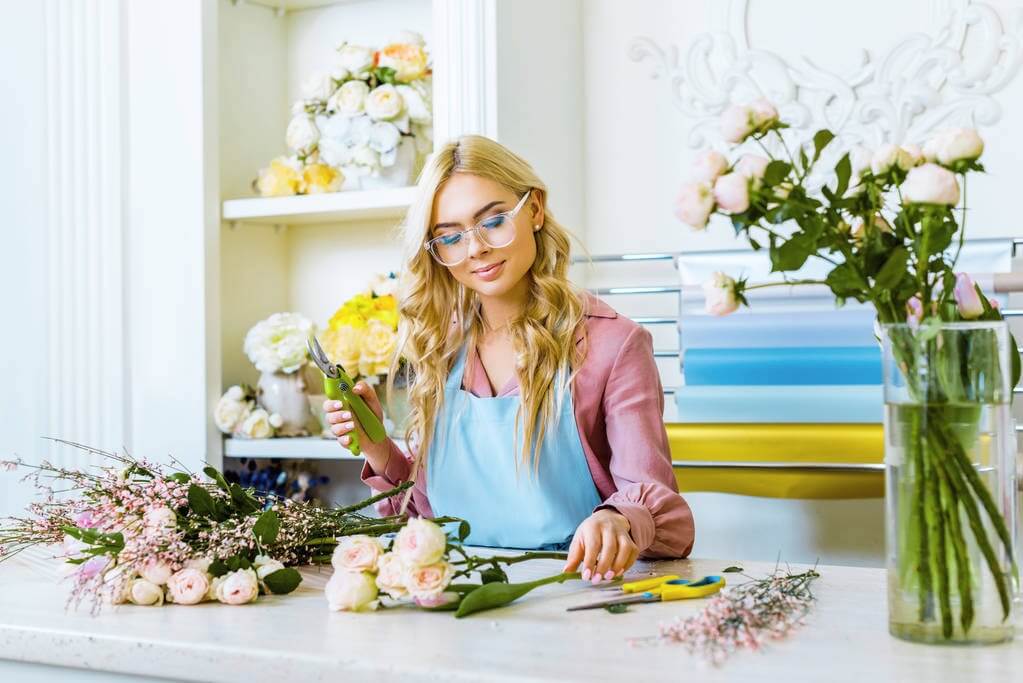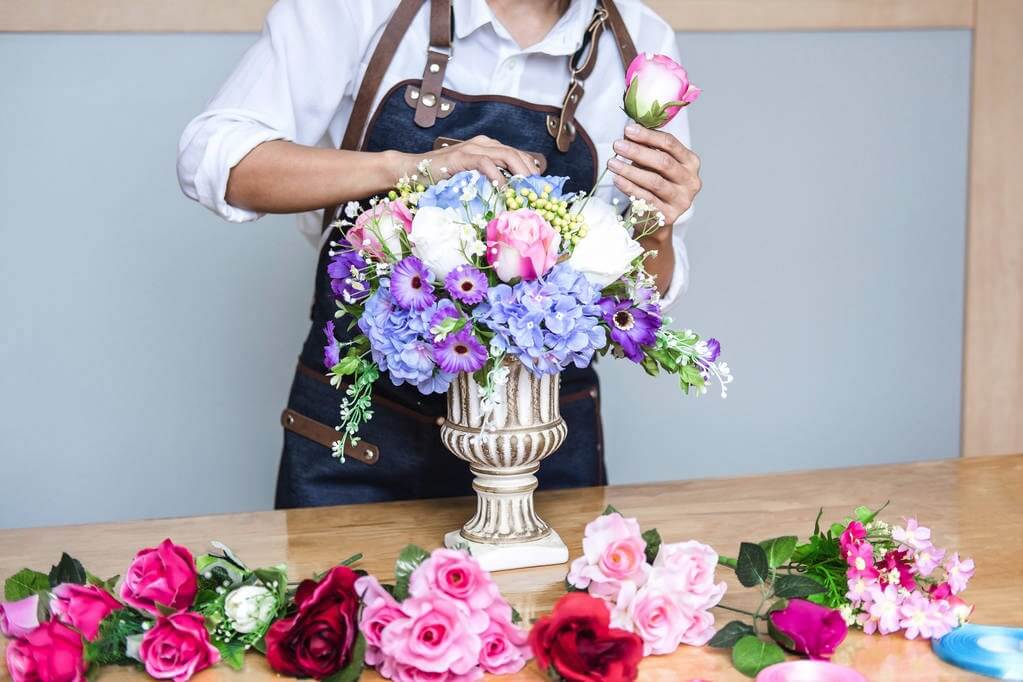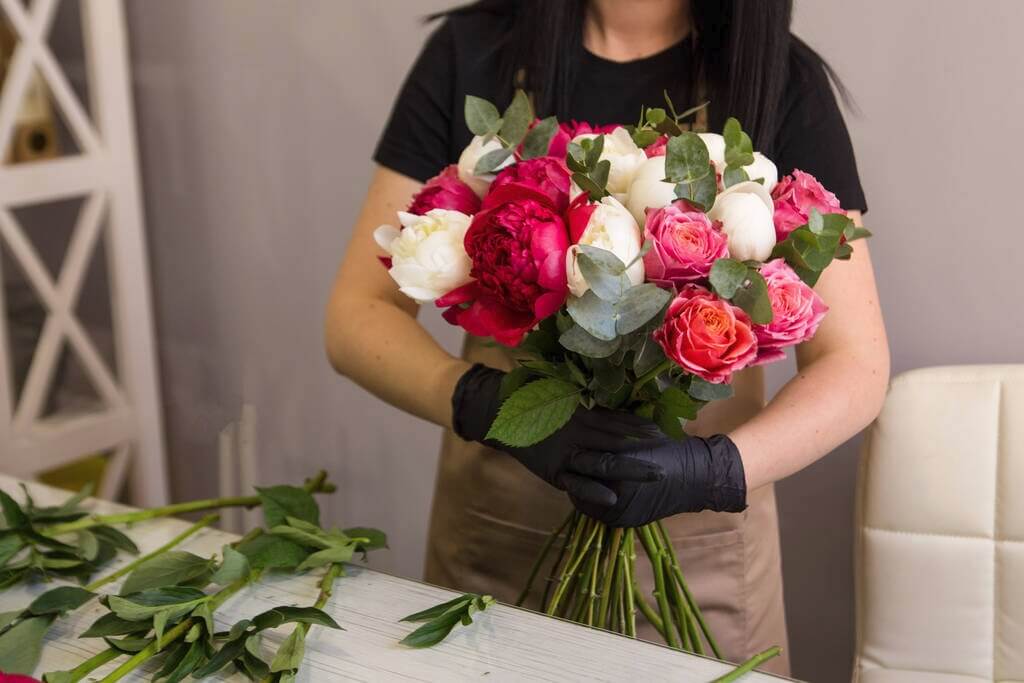Do Florists Do Artificial Flowers?
18th May 2022

Artificial Flowers by Florists
Florists have a great passion for fresh flowers and have until recently held onto the belief that artificial flowers are inferior and could never be a suitable replacement for the real deal. Today, artificial flowers are so realistic that even the most seasoned gardeners can have trouble distinguishing them from real flowers.
The improvements in quality that have taken place in the world of fake flowers present immense business opportunities for florists. This article will illustrate that florists are shifting their focus from real flowers to artificial flowers, also known as faux flowers, silk flowers, fake flowers, plastic flowers, artificial greenery, or permanent botanicals.
Who is a Florist and What Does a Florist Do?
Florists are persons in the flower industry who can be:
• Growers
• Individuals or companies purchasing flowers from growers to sell directly to consumers
• Artistic individuals crafting artificial flowers
• Natural and artificial flowers wholesalers
Florists may:
• Own small independent brick and mortar retail flower shops
• Run internet-based delivery services
• Be employed by large floral companies
Generally, a florist may specialise in any or several of the following:
• Grow a wide variety of flower species
• Craft artificial flowers that look real
• Design and create beautiful flower arrangements for homes, corporate events, or wedding parties
• Care and supply of premade flower arrangements
Trends in the Australian Floral Industry
Current trends in Australia's economy such as growth in discretionary income, positive consumer views, and business confidence, create opportunities for revenue growth in the floral industry. There is however, no single player who can be said to be Australia's largest company in the flower retailing industry.
Value of the Floral Industry in Australia
The value of the floral industry in Australia is estimated to be around $900 million, with over 2,500 businesses employing more than 6,000 people. These figures are projected to rise with the growth of online flower shops and an increase in digital technology training.
More than 40% of florists in Australia work full-time, and most florist shops are owner-operated. As online flower shops grow, there is a reducing reliance on walk-in business. They rely more on events and use casual labour to meet wedding, corporate, and high traffic demands, such as on Valentine's Day.
Artificial Flowers Today
It is challenging to distinguish faux flowers from natural ones because of today's manufacturing technology, particularly products that are real-touch. Unlike with real flowers, you need a small financial investment to spruce up your living space or event with artificial flower arrangements.
Artificial flowers and plants have come quite a long way, and today they are prevalent among consumers and florists.
Brief Background of Artificial Flowers
Florists considered artificial flowers inferior for a long time. Today, fake flowers are loved for their versatility, and florists use them to enhance live plants or make stylish flower bouquets and arrangements…. Particularly when thy variety they want is out of season or not available.
The Chinese are thought to have pioneered the use of silk cloth to make artificial flowers. With time, the idea of fake flowers spread to other parts of the world, where improvements in quality and use of fabric evolved to what it is today.
Materials Used in Designing Artificial Flowers
Florists use various materials to make artificial flowers that meet the needs of their target market. The following are popular materials florists use to make artificial flowers:
Polyester, Plastic, Satin, Latex, Foam, Silk, Cotton, Rayon
The latter three materials are the fabrics of choice for high-end markets. Polyester is preferred because it is affordable, durable, and easy to dye and glue. The design of artificial flowers is inspired by nature and trends in interior design and fashion.
The Process of Manufacturing Fake Flowers

All high-quality fake flower petals are made from silk, rayon, or cotton fabrics and are manufactured following the process described below:
• The material is die-cut into different petal sizes depending on the flower type
• The petals are dyed
• The petals are pressed to give different curves, wrinkles, and shapes
• Petals are stiffened using thin wires
• Petals and leaves are assembled into a stem
• Finished stems are parked, displayed, or shipped
Finished artificial flowers are subjected to quality control. This process ensures imperfect flowers are rejected before they are available for sale.
Artificial Flower Business in Australia
Artificial flowers are no longer viewed as unsightly and out of fashion in Australia. Today, florists craft and supply trendy fake flower arrangements to consumers much more than previously. Even though florists are passionate about real flowers, many opportunities exist for them in the world of artificial flowers.
What Drives Florists to Make Artificial Flowers?
Australian florists are keenly focusing on providing artificial flowers to their consumers. Some of the factors attributed to florist interest in the fake flower business include:
• The growing fake flower market: Consumers are aware of the quality of faux flowers available today and prefer them to fresh flowers. As a result, florists are perfecting their skills to produce one-of-a-kind arrangements and displays.
• Limited DIY fake flower styling skills among consumers: Consumers need florists to help with the styling. Only a florist can bring to life great interior décor experiences that blend artificial flower colours with a home or wedding colour theme.
• Improvement in manufacturing technologies: There is an opportunity for florists to design and create artificial flowers with artificial plants. It is possible to craft fake flowers with real touch and colours that are close to nature with today's technology.
• Bulk stocking is possible: Artificial flowers are durable and do not have a sell-by-date or use-by-date. Florists can stock and display them without worrying about maintenance costs.
• They provide an opportunity for e-commerce and help small independent florists survive competition: Unlike fresh flowers, which are fragile, fake flowers are robust and can be ordered online and delivered over long distances with confidence. This, combined with increased consumer confidence in digital commerce, has led to more online flower businesses selling artificial flowers.
Artificial flowers are not affected by seasons: Climate does not affect the availability of artificial flowers. This enables florists to meet consumer demands throughout the year. Florists can defy seasons by having summer blooms during winter and other flowers associated with different seasons on display.
Improved technology used to manufacture artificial flowers and demand for carefree home décor accessories have led to the growth of the artificial flower industry. The sector is now a multi-billion-dollar business.
What Drives Fake Flower Consumer Demand
Flowers are popular for decorating accessories and merchandise in supermarkets, hotels, gardens, homes, workplaces, and wedding parties. Most consumers prefer artificial flowers for their decoration needs and as gift hampers because of the following reasons:
• Artificial flowers look real: Artificial flowers are made from high-quality materials, making them look natural. The floral stems and petals are made from high-quality materials like silk making them difficult to distinguish from real flowers.
• Fake flowers are long-lasting and require little attention: You no longer need to have green fingers to brighten your living space. Artificial flowers are crafted to last forever without the need for water, fertiliser, or sunlight.
• You can combine fake flowers with real flowers: The demand for artificials is high because it is possible to combine them with real flowers to create a stunning colour contrast in your living space. For instance, you can create a beautiful combination of dried flowers and fake ones.
• Fake flowers do not have pollen and are therefore good for allergy suffers.
• Artificial flowers are relatively affordable and are inexpensive compared to real flowers, yet they look just as real.
Examples of Artificial Flowers Done by Florists
Artificial flowers done by florists come in many different varieties and qualities, including:
• Silk flowers: These are a perfect alternative to fresh flowers for your wedding or home decoration needs. Silk flowers are the best quality of artificial flowers as they look the most realistic.
• Wax coated artificial flowers: Wax makes these flowers look more natural than unwaxed ones.
• Foam flowers: They are light in weight and the cheapest of all artificial flowers.
• Polymer flowers: Florists craft them from a blend of latex and foam. These flowers are costly because latex and foam are not readily available to florists.
Florists use real materials and great techniques to enhance fake flowers. They insert artificial branches, thorns, add impressions such as holes that look like insect damage, and even fragrance to make them as realistic as possible.
Florists create flower arrangements in a variety of styles, including:
• Bridal bouquet
• Bunches
• Floral bushes
• Floral picks
• Drop-ins
• Cuttings
• Buttonholes
• Teardrop
• Crown
Making Fake Flower Arrangements Look Real

Choosing the most realistic-looking artificial flowers will keep your visitors wondering whether or not your floral collection is real. Matching fake flowers to your existing décor also influences how real they appear.
For example, if you are considering using faux flowers as wedding flowers, you should hire a florist who will be able to create the most realistic-looking floral arrangements for your big day. There are several ways to make artificial flowers look real.
The following are ideas you can use at home or wedding events to make artificial flowers look more natural:
• Clipping the stems and opening the petals
• Filling fake flower planters with soil
• Trimming
• Mixing with real flowers
Bending the Stems and Opening the Petals
Artificial flowers typically have long stems that can be clipped to fit into your desired arrangement. You can also bend the stems to give your faux flowers a more greenish appearance that looks natural. This, paired with opening up parts of petals, will provide them with a much more realistic appearance.
Filling Fake Flower Planters with Soil
Adding soil to the planter used for your arrangement is a great way to make your flowers seem natural. Also, placing your floral arrangement in areas associated with naturally growing flowers, like near the window, makes them look real.
Trimming
The stems of fake flowers are typically long and may not work with your pre-planned arrangement. All you need to do is trim the bottom stems to a suitable length and you’re ready to go. If you’re needing to place them in a vase, think about using artificial water. This holds the stems in place so they look just they way you intend, all year round.
Mixing Faux Flowers with Real Flowers
Mixing faux flowers with real ones makes your display look natural. Remember, mix artificial flowers with real ones in a way that does not make them look artificial.
To achieve a natural mix of fake and real flowers, vary the sizes, colours and species of artificial flowers and real ones when pairing.
You can mix real flowers of different colours with fake ones to create a beautiful colour contrast that highlights the beauty of your faux flowers. It is particularly common to find beautiful combinations of natural dried flowers with artificial flowers in Australian homes. Also, try pairing the best of dried and artificial flowers to create fantastic colour contrasts that highlight the beauty of your fake flowers while making them appear natural.
Fake Flowers That Look the Most Realistic
Here is a small list of fake flowers you should keep an eye out for the next time you visit a fake flower store. These will likely convince just about everyone who enters your home:
• Artificial Lavender Bunch
• Artificial Wildflowers
• Faux Magnolia Blossom Spray
• Tulip Silk Flowers
• Red Fake Poppy Flower
• Cherry Blossoms
• Faux Anemone Stem
• White Silk Flowers Spray
• Faux Cornflower Stem
• Orchid in Pot
• Faux Fuchsia Orchids
• Artificial Dogwood Stem
• Preserved Bougainvillaea Stem
• Calla Lilies Stem
• Faux Magnolia Blooms Spray
• Vase with Artificial Flowers
• Silk Peony Bundle
• Faux Blossom Spray
• Real Touch Roses
• Faux Ranunculus Flower
• Hydrangea Silk Flowers
The Future of Fake Flowers
The beauty, durability, and functionality of fake flowers will continue to improve as new technologies emerge. However, because people like to be surrounded by artificial greenery that resembles nature, it is unlikely that future artificial flowers will stop mimicking nature.
Consult Experts for Fake Flower Styling Tips
Even though florists remain passionate about fresh flowers and will still consider them as a first choice, the immense business opportunities in the world of artificial flowers are more than enticing. Most consumers now prefer artificial flowers and are increasingly approaching florists for synthetic flower styling.
Consumers' rise in demand for fake flowers and the immense opportunity it offers make it difficult for florists not to consider artificial flowers as part of their business model. With that said, why not consult with the Artificial Plant Shop. They will have a great selection of artificial flowers that will suit any of your decor needs.

